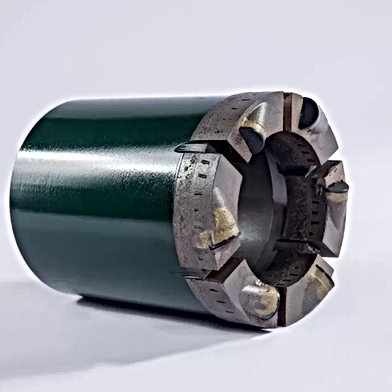59mm

Renowned for their adaptability, NQ PDC core bits find widespread use in geological drilling, coal mining, and hydraulic engineering sectors. Their efficiency and effectiveness make them invaluable assets in a variety of construction projects, including roadway, rail, and bridge development.
The PDC NQ Series core bit, crafted from PDC(Polycrystalline Diamond Compact) or natural/synthetic diamond materials, serves as a cornerstone in geological exploration and engineering endeavors, delivering dependable data with precision and efficiency.
With an array of face profiles and diverse diamond sets, it presents a cost-effective solution adaptable to various conditions, ensuring optimal performance and longevity.
Application: Widely utilized in geological exploration , coalfield mining, water well drilling , water conservancy, and hydropower projects, this core bitoffers versatility across multiple sectors.
Applicable Strata: Effective in soft and medium-hard rock formations, including sandstone, shale, limestone, conglomerate, marble, etc., with a compressive strength (f) of up to 12.
Features:
Offers approximately 10 times the lifespan of carbide drill bits, ensuring prolonged durability and performance.
Provides roughly 4 times the lifespan of diamond drill bits, guaranteeing reliable and consistent results in drilling operations.
Name | NQ PDC core bit |
Brand | HANS |
Size | ¢56mm~¢203mm |
Application | geological exploration, coalfield mining, water well drilling |
and water conservancy and hydropower, etc. | |
Applicable Strata | Soft and medium hard rocks, like Sandstone, Shale, |
Limestone, Conglomerate, Mable, etc.(f≤12) | |
Features | About 10 times useful life than Carbide drill bit |
About 4 times useful life than Diamond drill bit |
How to Buy
Request an Equipment Quote
Ready to buy stuff from Flexible,Request a quote now.
Buy
Browse Parts and equpments on our store
Reviews
FAQ
Q: What are the most common types of drilling method?
Here are the five common types of oil drilling techniques. 1. Cable Drilling. 2. Directional Drilling. 3. Electro-Drilling. 4. Rotary Drilling. 5. Dual-Wall Reverse- 6. Circulation Drilling.
Q: How deep can a drill rig go?
Depending on the rig type, offshore rigs are rated to drill in water depths as shallow as 80 feet to as great as 12,000 feet. The greatest water depth a jackup can drill in is 550 feet, and many newer units have a rated drilling depth of 35,000 feet.
Q: What is the process of oil exploration?
Oil and gas exploration encompasses the processes and methods involved in locating potential sites for oil and gas drilling and extraction. Early oil and gas explorers relied upon surface signs like natural oil seeps, but developments in science and technology have made oil and gas exploration more efficient.
Q: What are the positions on a rig?
Diver – Some rigs require the use of divers to maintain the underwater equipment. Driller – Heads up all operations related to the drilling equipment. Electrician – Maintains and repairs all electrical systems onboard the rig. Floorman – Provides general support to the rig's drilling operations.
